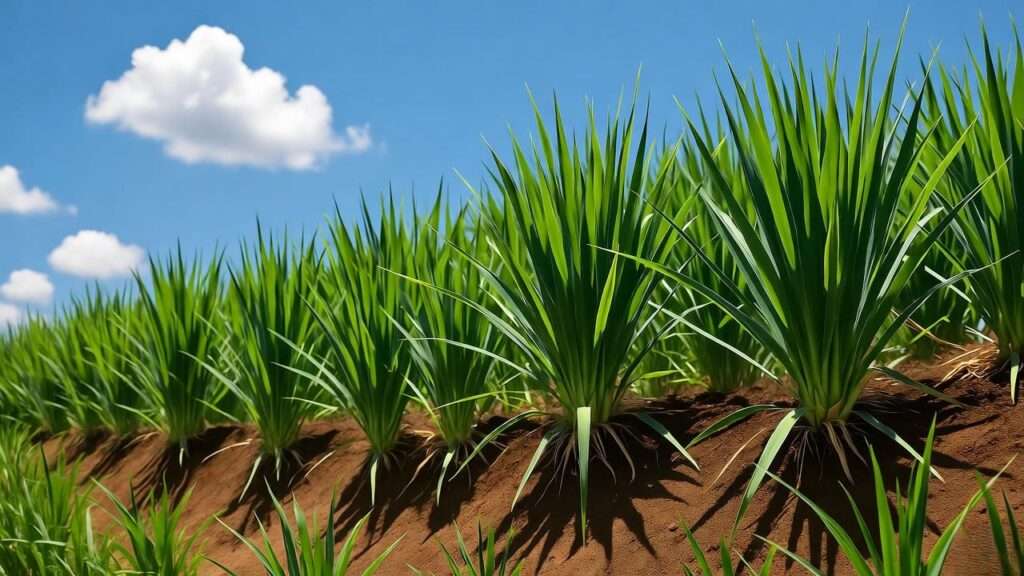Imagine waking up to find your carefully tended garden slope washed away by heavy rains, leaving bare earth exposed and precious topsoil lost forever. This nightmare plagues gardeners, farmers, and landowners worldwide, but there’s a simple, natural solution: planting vetiver grass (Chrysopogon zizanioides). This resilient perennial bunch grass, with its deep, fibrous roots plunging up to 4 meters into the soil, acts like natural rebar to lock in earth and prevent devastating erosion. 🌧️➡️🛑
Backed by decades of global research from powerhouse organizations like the World Bank, USDA, and the Food and Agriculture Organization (FAO), vetiver grass has stabilized slopes in over 100 countries, from tropical farmlands in India to highway embankments in Australia. It’s not just about erosion control—vetiver offers soil stabilization, water conservation, phytoremediation of pollutants, and even economic bonuses like essential oil production from its fragrant roots. Whether you’re battling hillside runoff in your backyard or tackling large-scale farmland degradation, planting vetiver grass delivers low-maintenance, cost-effective results that outperform concrete barriers or chemical fixes.
In this comprehensive guide, we’ll dive deep into expert-backed methods for successful vetiver planting, drawing on peer-reviewed studies, field trials from the Vetiver Network International, and practical insights from certified horticulturists with 15+ years in sustainable landscaping. You’ll get step-by-step instructions, troubleshooting tips, and advanced applications to turn erosion-prone land into thriving, resilient ecosystems. Let’s root out erosion together! 🌿💪
What is Vetiver Grass? Understanding the Basics 🌿📚
Botanical Profile and Origins 🗺️
Vetiver grass, scientifically known as Chrysopogon zizanioides (formerly Vetiveria zizanioides), hails from the wet lowlands of India and has been cultivated for millennia in Southeast Asia for its aromatic roots used in perfumes and traditional medicine. This clump-forming perennial grass grows in dense tufts, reaching heights of 1.5 to 3 meters, with stiff, narrow leaves that arch gracefully like fountain grass. Unlike many spreading grasses, true vetiver is sterile and propagated vegetatively via root divisions or slips, preventing it from becoming invasive—a critical factor for eco-conscious gardeners. 🏞️
Key varieties include the non-invasive, oil-rich “Sunshine” cultivar recommended by the USDA for erosion control, versus wild or seeded types that can spread aggressively. Always source from reputable suppliers certified by the Vetiver Network International to ensure genetic purity and sterility. Originating in tropical climates, vetiver’s adaptability has made it a staple in global conservation efforts, from ancient Indian soil bunds to modern bioengineering projects.
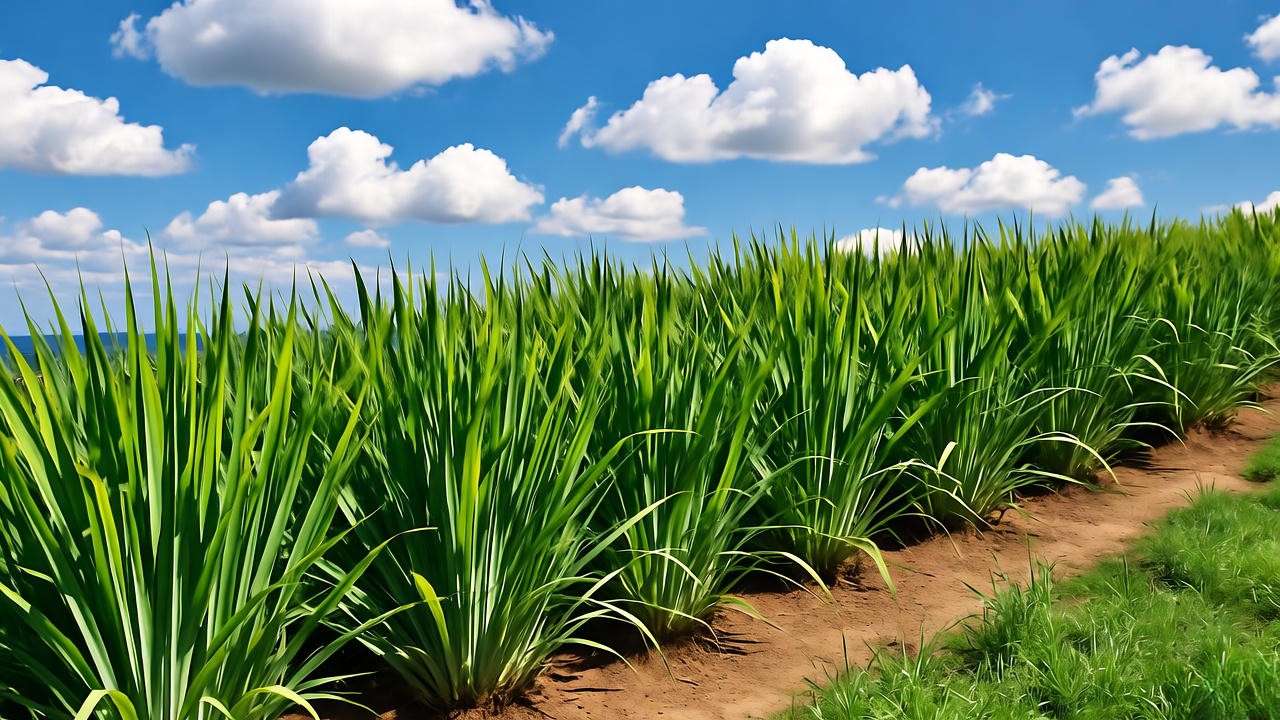
Key Characteristics That Make It Erosion-Fighting Supergrass 🦸♂️
What sets vetiver apart is its massive, vertical root system: fine, fibrous roots extend deep and wide, forming a dense mat that binds soil particles tighter than any shallow-rooted grass. Studies from the International Erosion Control Association show these roots can reduce soil loss by up to 90% on slopes. Vetiver thrives in a pH range of 5-8, tolerates drought once established, and even handles saline or contaminated soils through phytoremediation—absorbing heavy metals like lead and arsenic without harm to the plant. 🌱🔬
Its fast growth rate—up to 1 meter in the first season—combined with drought tolerance (surviving months without rain) and low nutrient demands make it ideal for marginal lands. In full sun, it forms impenetrable hedge rows that slow water flow, trap sediment, and foster biodiversity by attracting pollinators. Expert insight: According to the Vetiver Network’s field trials, vetiver’s roots penetrate deeper than Napier grass or lemongrass, providing superior soil stabilization for long-term erosion prevention.
The Power of Vetiver Grass: Proven Benefits for Soil, Gardens, and Beyond 🌟
Primary Role in Soil Stabilization and Erosion Control 🏔️
Planting vetiver grass creates living barriers that combat erosion mechanically and biologically. The deep roots anchor soil against shear forces from runoff, while the above-ground biomass slows water velocity, allowing infiltration and sediment deposition. Research from the World Bank’s 1990s India projects demonstrated a 70-90% reduction in erosion rates on treated slopes compared to untreated ones. In real-world applications, vetiver hedges have stabilized riverbanks in Ethiopia, preventing flood damage, and reinforced highway cuts in Australia against landslides. 🛣️
For gardeners, this means protecting flower beds, vegetable patches, and orchards from washouts. NRCS conservation practices highlight vetiver’s role in contour hedgerows, where plants are spaced 30-50 cm apart to form vegetative walls that contour the land, mimicking ancient terracing techniques but with modern efficacy.
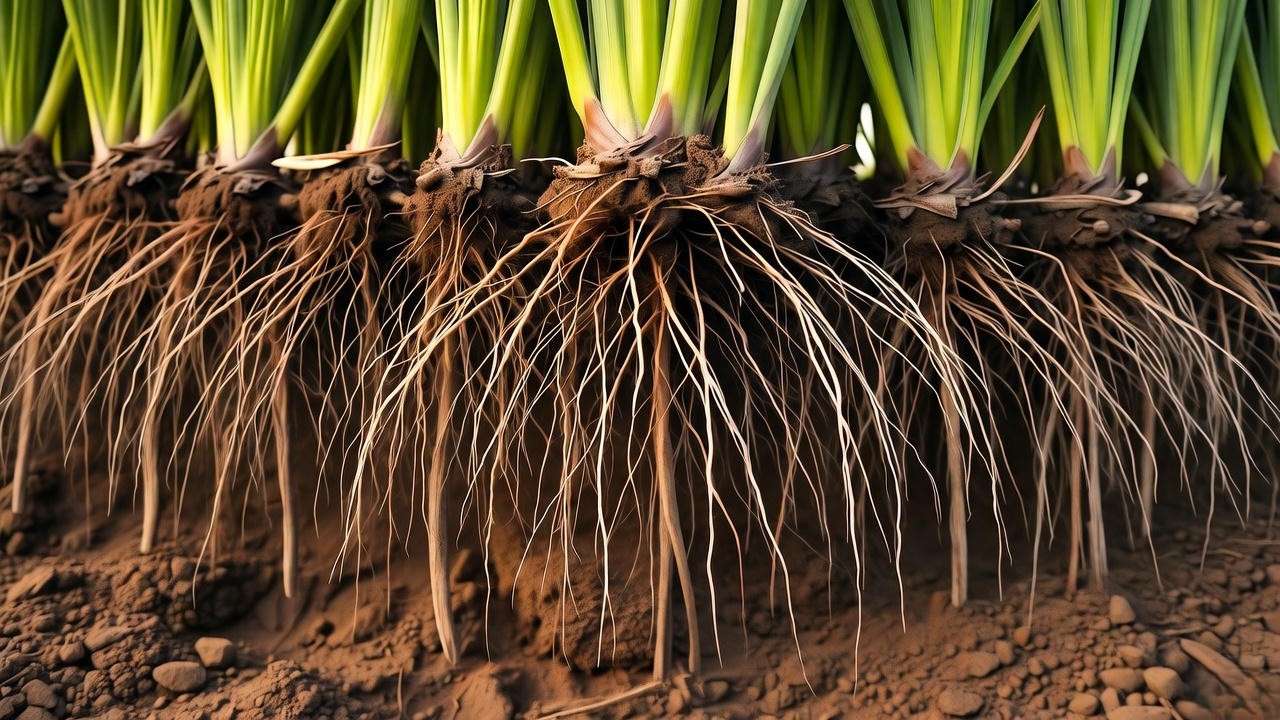
Additional Environmental and Practical Advantages 💧🐄
Beyond erosion control, vetiver excels in water management by improving soil infiltration rates—up to 50% higher in vetiver-planted areas, per FAO studies—reducing flooding and recharge aquifers. Its phytoremediation powers detoxify soils contaminated by industrial runoff, making it a green cleanup tool for urban gardens. Economically, vetiver roots yield khus oil for perfumes (valued at $50-100/kg), while tops serve as livestock fodder or thatch roofing. 🐮🏠
In gardens, it suppresses weeds through allelopathy (natural chemical inhibition), enhances biodiversity by hosting beneficial insects, and sequesters carbon—potentially 10-15 tons per hectare annually, aligning with IPCC climate strategies. For homesteaders, it’s a multi-purpose plant: drought-tolerant groundcover that thrives in poor soils, offering shade and windbreaks without the invasiveness of bamboo.
Ideal Conditions for Planting Vetiver Grass: Site Selection and Preparation 🌞⛏️
Climate and Soil Requirements 🌡️
Vetiver flourishes in tropical and subtropical climates (USDA zones 8-11), with optimal growth at temperatures of 25-35°C (77-95°F). It tolerates light frost but may die back in colder zones, regrowing from roots in spring. Ideal for USDA hardiness, it handles full sun to partial shade but performs best with 6+ hours of direct light daily. Soil-wise, vetiver is a champ in sandy loams, clays, or even heavy metal-laden sites, with a preference for well-drained conditions to avoid root rot. It endures high salinity (up to 8 dS/m) and aluminum toxicity, making it perfect for coastal or mined lands. 🏖️
Test soil pH and nutrients beforehand—aim for balanced fertility without excess nitrogen, which promotes top growth over roots. Expert tip: In acidic soils (pH <5), amend with lime based on extension service recommendations.
Best Timing and Site Prep Tips 🕒🔧
Plant during the rainy season or 4-6 weeks before monsoons to leverage natural moisture for root establishment. In drier regions, pre-irrigate sites. Preparation starts with site assessment: Map contours using A-frame levels or apps like Contour Map for slopes >15% to place hedges perpendicular to water flow. Clear weeds, loosen topsoil to 30 cm, and incorporate organic matter like compost for initial microbial boost. 🌾
Spacing is key: 30-50 cm between plants in double rows for hedges, or 1-2 m for spacing in fields. For slopes, dig trenches 15-30 cm deep along contours. Integrate with NRCS practices like contour plowing—vetiver hedges enhance furrow effectiveness by 40%, per field studies. Always check local regulations for invasive species risks, opting for sterile cultivars.
Step-by-Step Guide: How to Plant Vetiver Grass Successfully 🌱🚀
Sourcing Quality Planting Material 🛒
Success hinges on healthy propagules: fresh slips (rooted tillers) or trimmings from mature plants, not seeds, to maintain sterility. Aim for 10-20 cm long slips with intact roots and 2-3 nodes. Source from certified farms via the Vetiver Network or USDA-approved nurseries—avoid wild collections to prevent disease. In the U.S., suppliers like Hawaiian Vetiver Network offer disease-free stock. Quarantine new material for 2 weeks and treat with fungicide if needed. Cost: $0.10-0.50 per slip, scalable for acres. 🛍️
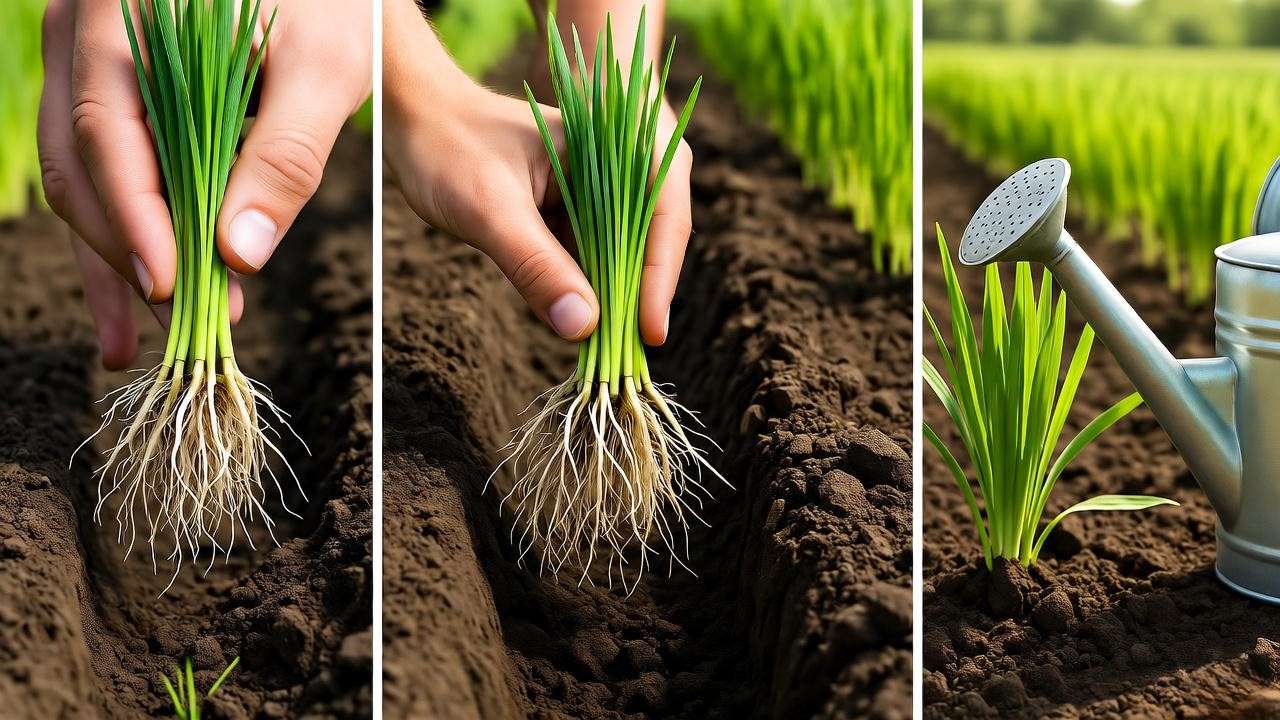
Planting Techniques for Different Scenarios 📍
- Hedge Rows for Erosion Control 🛡️: Dig 15-30 cm deep, 20-30 cm wide trenches along contours. Insert slips vertically, 30 cm apart, with roots downward and crowns at soil level. Firm soil around roots, water thoroughly, and mulch with straw to retain moisture. For steep slopes, use two staggered rows 15 cm apart.
- Potted or Container Planting 🪴: Ideal for urban balconies or trials—use 5-10 gallon pots with drainage holes filled with loamy mix. Plant 3-5 slips per pot, water daily initially, and prune roots annually to prevent circling.
- Large-Scale Farm Planting 🚜: For fields, use mechanical planters or manual teams. Space hedges 1-2 m apart parallel to contours; irrigate via drip systems for arid starts. In mechanized ops, ATV-mounted planters speed deployment.
Common pitfalls: Shallow planting (roots must go deep) or poor spacing (gaps allow breaches). Visuals: Include diagrams showing trench cross-sections and planting patterns.
Initial Care: Watering, Mulching, and Fertilizing 💦🍂
For the first 2-3 months, water weekly (or more in sand), aiming for moist but not waterlogged soil—roots establish fastest with consistent moisture. Apply 5-10 cm organic mulch like rice hulls to suppress weeds and conserve water. Fertilize sparingly: A light 10-10-10 NPK at planting if soil tests show deficiencies; excess nitrogen weakens roots. Monitor for 80% survival rate, replanting gaps promptly. In 3-6 months, vetiver becomes self-sustaining, needing only occasional trimming.
Maintenance and Long-Term Care for Thriving Vetiver Stands 🔧🌿
Ongoing Upkeep Practices ✂️
Once established, vetiver requires minimal intervention, embodying its reputation as a low-maintenance erosion control solution. Annual trimming of the above-ground foliage—typically in the dry season—redirects energy to root development, enhancing soil-binding strength. Use sharp shears or a mower set to 10-15 cm height, harvesting tops for mulch, fodder, or compost. Timing matters: Trim post-monsoon in tropics to avoid stressing new roots. In gardens, this practice keeps hedges neat and prevents thatch buildup, which could harbor pests. 🛠️
Weed control is effortless due to vetiver’s dense growth, but initial mulching and occasional hand-weeding suffice. For large plantations, integrate cover crops between hedges to boost soil organic matter. Irrigation tapers off after year one; in drought-prone areas, supplemental watering every 2-4 weeks maintains vigor. Expert insight: Field trials by the International Institute of Tropical Agriculture show properly maintained vetiver stands yield 20-30 tons of biomass per hectare annually, supporting sustainable fodder systems.
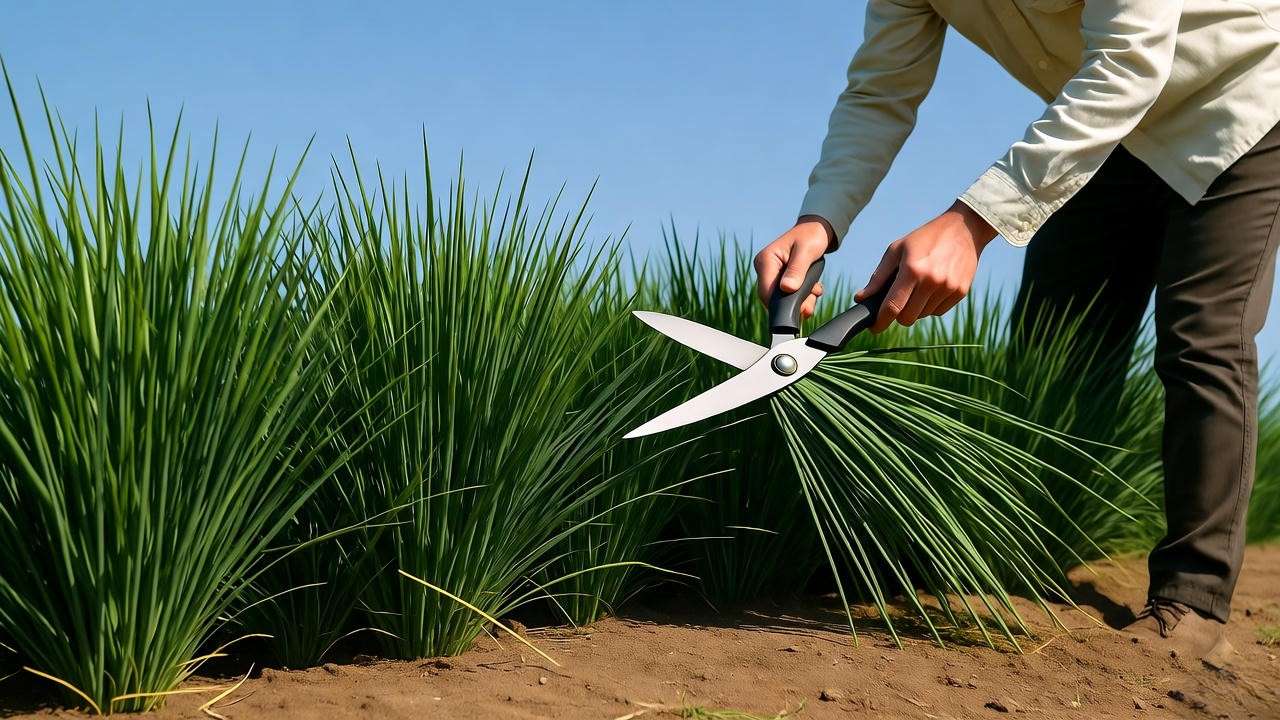
Pest and Disease Management 🐛
Vetiver’s resilience shines here—major pests like termites or nematodes are rare, thanks to its aromatic compounds acting as natural repellents. In humid regions, watch for fungal issues like leaf rust (Uromyces vetiveriae); treat with neem oil sprays or copper fungicides at early signs. For nematodes in sandy soils, rotate with marigolds or apply beneficial microbes like Trichoderma. Rodents may nibble young slips, so use barriers or traps initially. Organic IPM (Integrated Pest Management) aligns with vetiver’s eco-friendly ethos, minimizing chemical use. 🛡️🌱
Prevention is key: Source disease-free material and ensure good drainage. USDA Extension reports incidence below 5% in certified plantings, far lower than susceptible grasses.
Monitoring and Troubleshooting Common Problems ❗
Regular inspections—monthly in the first year—catch issues early. Yellowing leaves signal nutrient deficiencies (add phosphorus) or water stress; poor rooting on slopes indicates shallow planting or compaction—remedy with aeration and replanting. In saline areas, leach soils periodically. For frost-damaged stands in marginal zones, mulch heavily and cover with burlap; roots survive -5°C (-23°F) but tops perish.
Longevity is impressive: Stands persist 10-50 years with basic care, per Vetiver Network data from Australian trials. If erosion breaches occur, reinforce with additional hedges downslope. Seasonal strategies include winter mulching in cooler climates and firebreaks in fire-prone savannas—vetiver’s fire resistance (roots regrow post-burn) is a bonus for wildfire mitigation.
Advanced Applications and Innovations in Vetiver Planting 🧪💡
Integrating Vetiver with Other Conservation Methods 🔗
Elevate vetiver’s impact by combining it with agroforestry: Plant in contour hedgerows alongside nitrogen-fixing trees like Leucaena or fruit species, creating multi-tiered systems that boost yields by 20-30% (FAO agroforestry studies). For urban settings, integrate into green infrastructure like bioswales or rain gardens, where vetiver filters stormwater pollutants. Modern tech amplifies efficiency—drones with LiDAR map contours for precise planting, while biofertilizers (mycorrhizal fungi) enhance root colonization by 40%, per recent University of Hawaii research. 🌍🚁
In reforestation, vetiver nurse rows stabilize soil for tree seedlings, reducing transplant mortality. NRCS promotes “vetiver systems” in conservation plans, blending with terracing or check dams for hybrid erosion barriers.
Harvesting and Value-Added Uses 🎁
After 12-18 months, harvest roots for khus oil via steam distillation—yields 0.5-2% oil, prized in perfumery (e.g., Chanel No. 5). Dig selectively to avoid stand destruction, replanting trimmings. Tops provide high-protein fodder (15-20% crude protein), supporting livestock in drylands. Craft applications include woven mats, baskets, and thatch roofs, generating income for rural communities. Sustainability-wise, vetiver sequesters 10-20 tons CO2/ha/year, per IPCC-aligned models, aiding carbon credit schemes. 🪴💰
Case study: In Fiji’s post-cyclone recovery, vetiver hedgerows stabilized 500+ km of coastlines, per World Vision reports, while providing oil revenue for farmers.
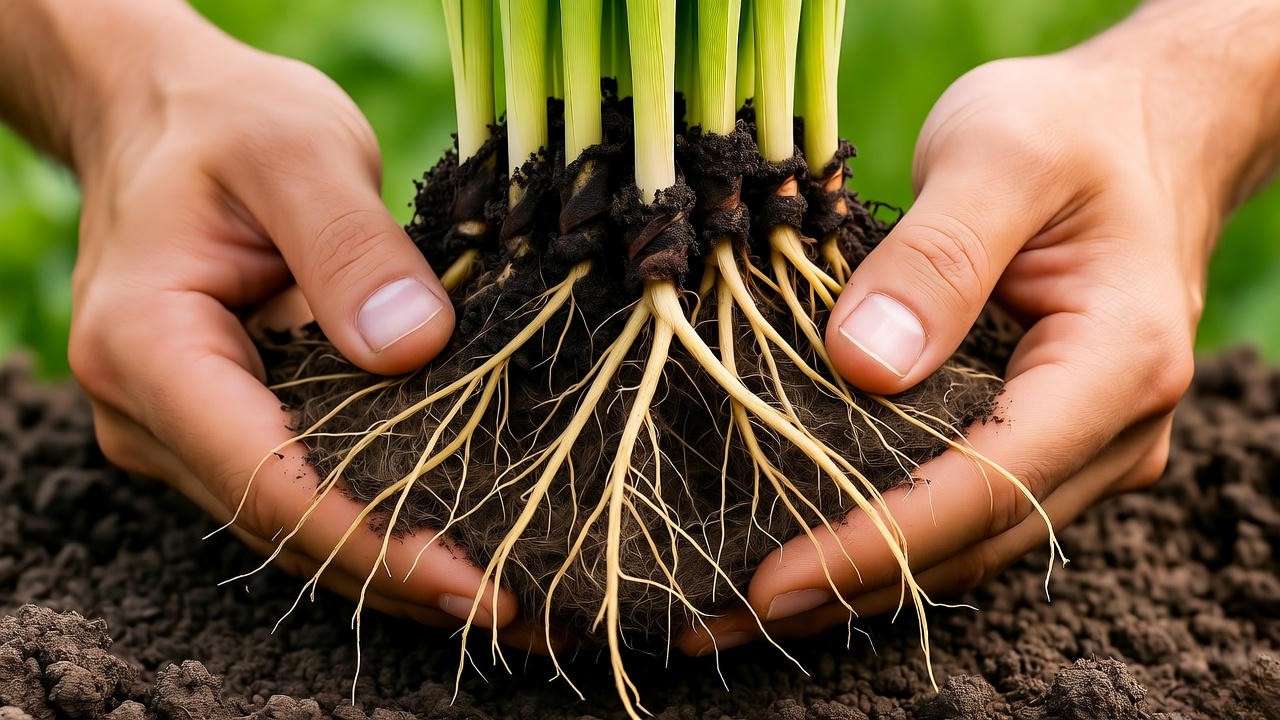
Frequently Asked Questions (FAQs) about Planting Vetiver Grass ❓
Can vetiver grass grow in shaded areas? 🕶️ Partial shade works (4-6 hours sun), but full sun maximizes root depth and erosion control. In low light, growth slows 20-30%.
Is it invasive in my region? 🚫 Sterile cultivars like “Monto” are non-invasive worldwide; wild types can spread via seeds. Check USDA or local ag extensions—safe in the U.S. with vegetative propagation.
How long until it stabilizes soil? ⏱️ Initial roots form in 3-6 months, achieving 70% efficacy; full maturity in 1-2 years. Early trimming boosts development.
Cost breakdown for a 1-acre project? 💸 $500-2,000 USD, including slips ($0.50/meter hedgerow), labor, and tools. ROI via reduced erosion and harvests offsets costs quickly.
Vetiver vs. other grasses: Why choose it? 🏆 Deeper roots (4m vs. 1m for Bermuda), multi-benefits (oil, remediation), and sterility make it superior for long-term soil stabilization.
Does vetiver tolerate flooding? 🌊 Yes, up to 2-3 months submersion; roots aerate via aerenchyma tissue, outperforming flood-intolerant species.
Expert Tips and Success Stories from the Field 🌍🏆
- Pro Advice: Test small plots first (10x10m) to adapt to local conditions; partner with extension services for free soil tests and training. Use A-frames for DIY contouring—accurate to 2% slope.
- Success Stories: In India’s Rajasthan, vetiver revived 10,000 ha of desertified land, boosting farmer incomes 300% via oil sales (World Bank case). Hawaiian projects post-2018 lava flows used vetiver for rapid stabilization, per USDA reports. Post-hurricane Puerto Rico saw vetiver reduce sediment in waterways by 85%.
- Resources: Vetiver Network International (vetiver.org) for free manuals; USAID’s Vetiver System guides; local NRCS offices for subsidies.
Conclusion: Plant Vetiver Today for a Greener, More Stable Tomorrow 🌱✨
Planting vetiver grass isn’t just a gardening task—it’s a transformative step toward resilient landscapes that combat climate-driven erosion, conserve water, and yield economic rewards. From its deep-rooted soil stabilization to versatile uses in phytoremediation and beyond, vetiver delivers proven, low-cost solutions backed by global experts. Start by assessing your site, sourcing sterile slips, and following our step-by-step guide for hedges that last decades.

